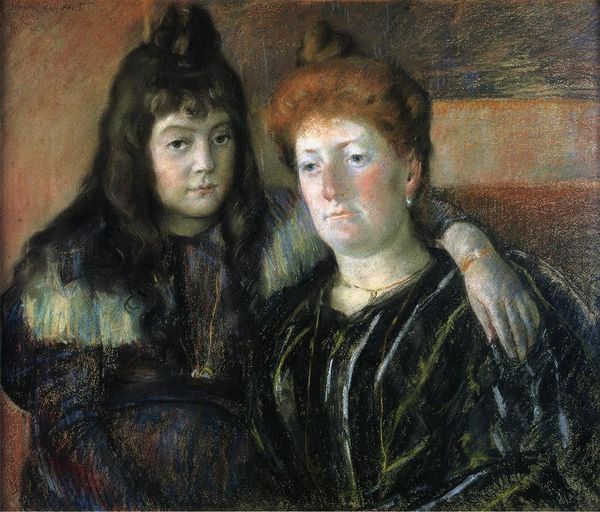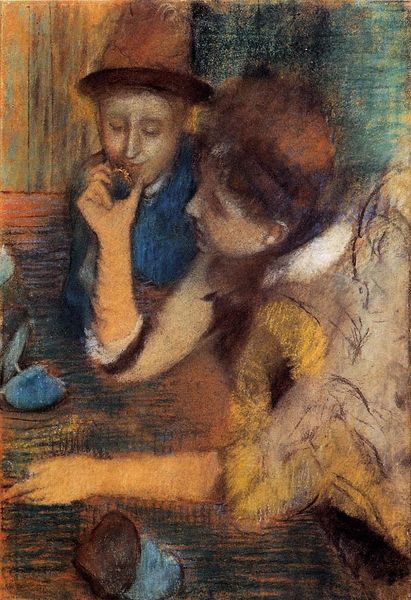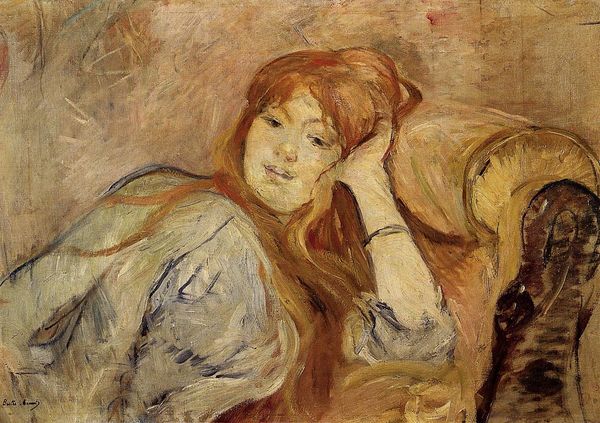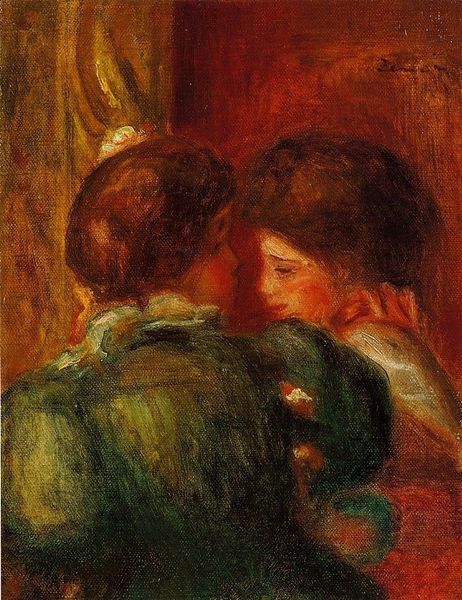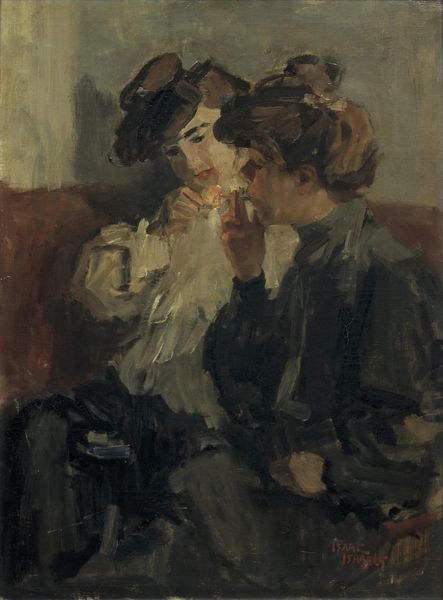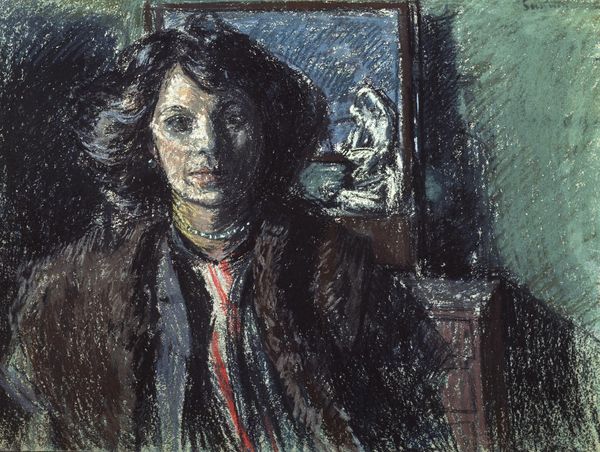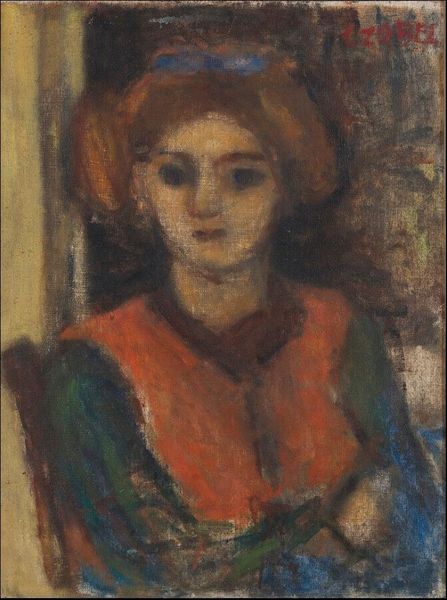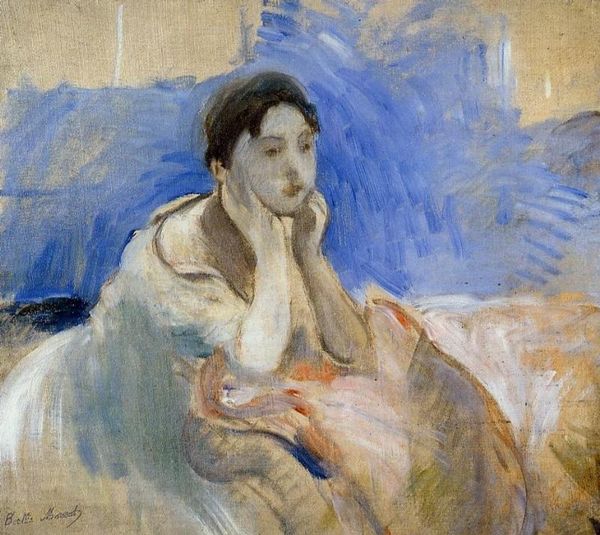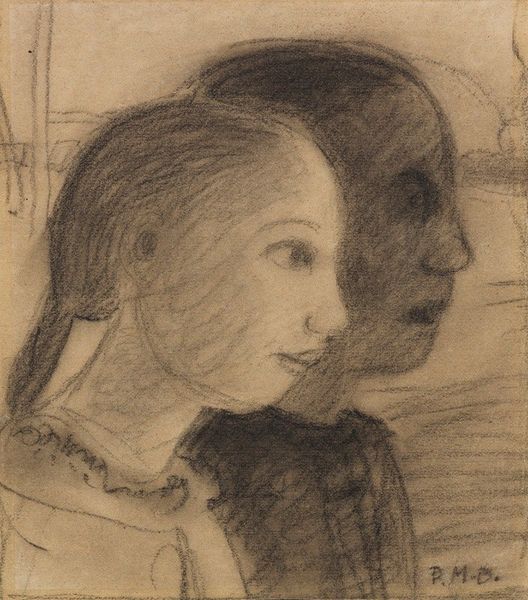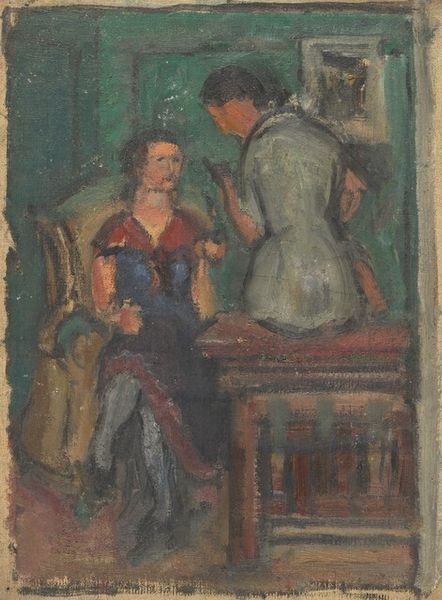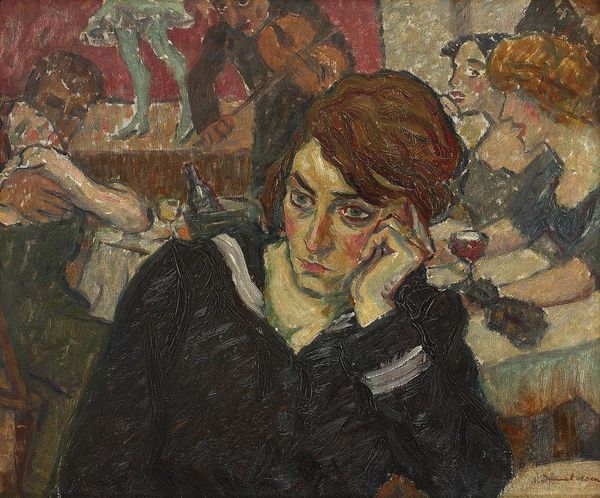
painting, oil-paint
#
portrait
#
figurative
#
painting
#
impressionism
#
oil-paint
#
figuration
#
oil painting
#
intimism
#
genre-painting
#
post-impressionism
Copyright: Public Domain: Artvee
Curator: Paul Gauguin's "Figures in an Interior," painted around 1890, presents an intimate glimpse into domestic life. Editor: The immediate impression is one of somber contemplation. The palette is subdued, almost monochromatic, drawing attention to the brushwork. Curator: Absolutely. The work appears to depict a mother and daughter, perhaps amidst the confines dictated by 19th-century social mores for women. Their shared interior becomes both a haven and a symbolic representation of their limited sphere. Gauguin was deeply interested in the construction of gender roles and class structure within the art. Editor: True. The way the artist uses the brushwork—loose and expressive—adds a certain mood. This contrasts starkly with some of his later, more defined works. Look at how form seems to dissolve into light and color. The faces aren’t realistically defined but captured as fleeting impressions. Curator: Yes. And thinking about this intimacy: intimacy can also be oppressive. As the restricted movement of women often pushed them into more performative domestic duties and internalized self reflection. We have to explore that dynamic when viewing a piece such as this. Editor: Well said, this piece really forces a visual question on representation. Consider how light and shadow sculpt the figures, and how Gauguin’s color choices create emotional resonance. It becomes almost about the language of color and how that color reveals emotion, less so than depicting a perfect copy of reality. Curator: It asks the question about how much an artist of the 19th-century could truly see and record these nuances and dynamics of their reality. I like considering it in terms of that exploration and conversation on intersectionality and gender expression of the period. Editor: It's fascinating how the formal elements can communicate complex human realities through this tension between subjective experience and visible depiction. Curator: Yes, by considering both, we can gain a fuller understanding. Editor: Exactly! It all coexists.
Comments
No comments
Be the first to comment and join the conversation on the ultimate creative platform.
